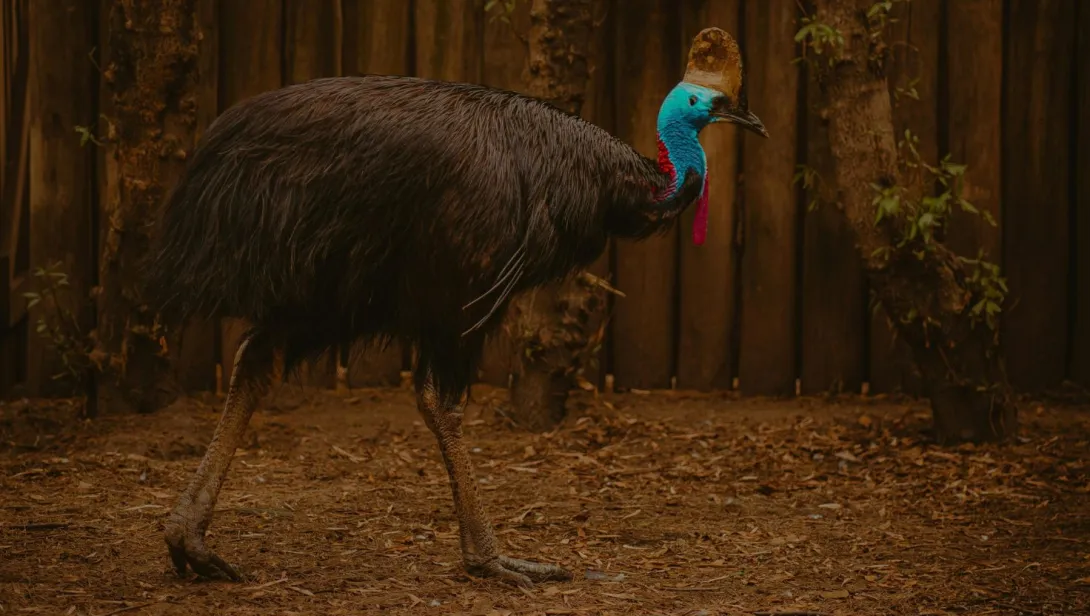Skip to main content
General Information
- The cassowary is a large, flightless bird native to Northern Australia, New Guinea, and nearby islands.
- It is considered the second-heaviest bird in the world, after the ostrich.
- There are three species: Southern Cassowary, Dwarf Cassowary, and Northern Cassowary.
- Cassowaries belong to the family Casuaridae.
- They are known for being reclusive and dangerous if threatened.
Physical Characteristics
- Cassowaries can grow up to 2 meters (6.6 feet) tall and weigh up to 60 kg (130 pounds).
- They have bright blue and black plumage with red or orange neck wattles.
- Their most distinctive feature is the casque, a helmet-like structure on their head.
- They have powerful legs and three toes with dagger-like claws.
- The middle claw can be up to 12 cm (5 inches) long.
- They have small, vestigial wings hidden beneath their feathers.
Behavior and Movement
- Cassowaries are solitary birds and highly territorial.
- They are excellent runners and swimmers.
- They can run up to 50 km/h (31 mph) through dense forest.
- They use their legs to defend themselves and deliver powerful kicks.
- They are considered one of the most dangerous birds in the world due to their strong kicks and sharp claws.
Habitat and Distribution
- Cassowaries inhabit tropical rainforests, mangroves, and grasslands.
- They are most commonly found in Queensland, Australia and New Guinea.
- They require large territories for foraging and breeding.
Diet and Feeding
- Cassowaries are omnivores, but primarily frugivores (fruit-eaters).
- They also eat fungi, insects, small animals, and plants.
- They play a vital role in seed dispersal in the rainforest.
- Their digestive system allows them to consume large, tough fruits.
Reproduction and Lifecycle
- Breeding season occurs from June to October.
- Females lay 3–6 large, green eggs in a ground nest.
- Only the male incubates the eggs and raises the chicks.
- Incubation lasts about 50 days.
- Chicks are born with striped brown and cream down feathers.
- They stay with the father for up to 9 months before becoming independent.
Conservation Status
- The Southern Cassowary is listed as Vulnerable due to habitat loss and road fatalities.
- Major threats include deforestation, dog attacks, and vehicle collisions.
- Conservation efforts include habitat protection, wildlife corridors, and public awareness.
- They are protected by Australian and Papua New Guinean laws.
Interesting Facts
- The casque may help in communication, thermoregulation, or navigating dense forests.
- Cassowaries make a low-frequency boom sound that is barely audible to humans.
- They have excellent hearing and good eyesight.
- Cassowaries are important to the ecosystem due to their role in seed dispersal.
- Their scientific name is Genus Casuarius.
- The name "cassowary" comes from the Papuan words "kasu" (horned) and "weri" (head).
